Sweet and aromatic Uzbek melon “Gulyabi”: how to choose and how to grow it yourself
Gulyabi is a famous melon variety that will appeal to anyone who at least once tastes its sweet, honey taste. This variety was brought to Russia from Persia in the 16th century and proved to be resistant to the climatic conditions of the country. It is difficult to imagine the passing summer without this sweet and ripe fruit, which gives a lot of positive emotions and no less benefits.
Those who have grown the crop themselves on their summer cottage have a special reason to rejoice.
Description of the melon variety
Gulyabi is also called Charjui melon in honor of the Chardzhui region in Turkmenistan. Sometimes the names “Chuzhuyskaya” or “Chunzhuyskaya” are found - the corresponding settlements (the villages of Chu and Chundzha) are also on the map of Central Asia.
The variety is grown in Kazakhstan, Tajikistan and the Astrakhan region of Russia. For a melon to fully ripen, 133 days must pass from the moment of germination.
Distinctive features
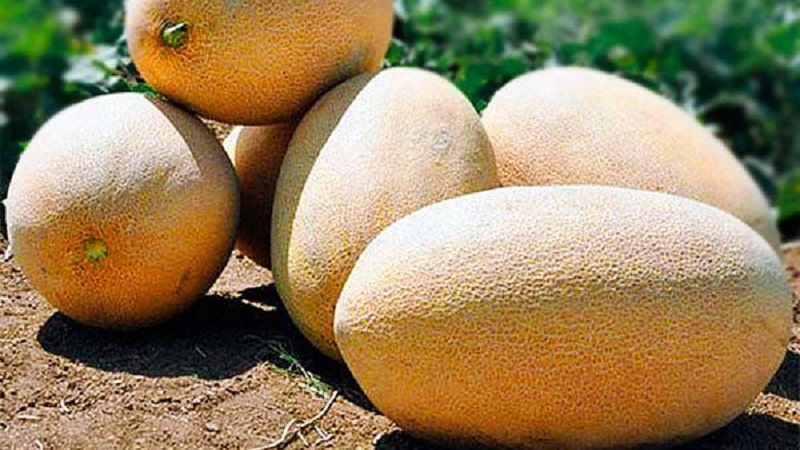
Breeders note the long storage period of the Gulyabi variety. Another difference of this variety is that the mature fruit reaches a weight of about 5 kg.
Important. The longer a melon is stored, the sweeter its flesh becomes. This feature of the variety distinguishes it from other varieties of melons.
Characteristics
Gulyabi has an elongated shape. The color of the peel is orange or yellow-green. The surface of the melon is covered with a mesh with small cells. Inside the fruit there is juicy and sweet white pulp, which has a greenish tint closer to the hard peel.From 1 m² you can get up to 14 kg of harvest.
Important. The taste of Gulyabi reaches its maximum level a few weeks after harvesting. During this time, the melon accumulates the required amount of sugar in the pulp and can even replace sugar cane.
How to grow this variety yourself
Growing melons is not easy, and the Gulyabi variety is considered one of the most capricious. Cultivating this melon is a labor-intensive and time-consuming process. However, the results in the form of a rich and sweet harvest contribute to the choice of gardeners in favor of this variety.
Growing and care
Gardeners recommend the seedling method of growing Gulyabi. Seedlings can be purchased at the store or grown independently from seeds.
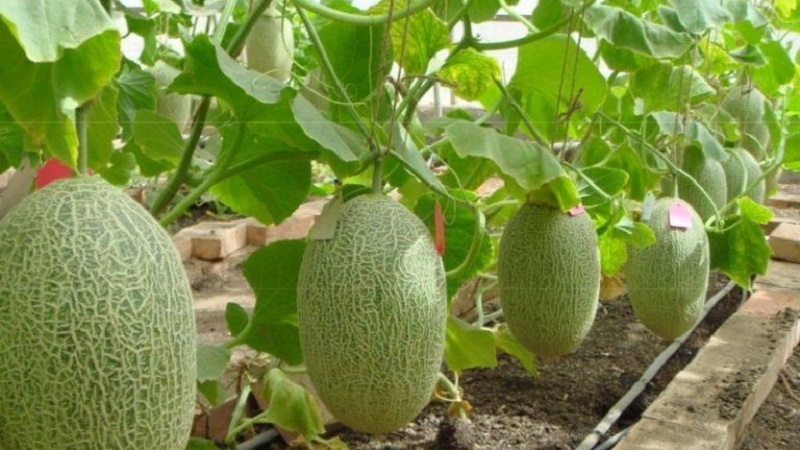
Basic rules for growing strong plants:
- Purchase three-year-old seeds, since a plant grown from freshly harvested seeds will not be able to form fruits and will be covered with barren flowers.
- Before planting, soak the seeds in damp gauze for several days. Place the gauze with the seeds in a plastic bag and hide it in a warm place.
- Sprouted seeds are planted in separate containers with a diameter of 10 cm. The soil chosen is nutritious and light.
- As soon as the first shoots appear, the seedlings are transferred to a bright place under the sun. To avoid stretching of seedlings, artificial lighting is installed in cloudy weather.
- Gulyabi should be watered no more than 3 times a week, as the soil dries out. It should be dry 5-7 cm from the surface.
- A week before planting in open ground, the seedlings begin to be hardened and taken out into the fresh air.
When grown by seed, the seeds are prepared in advance for planting.. Before planting in open ground, they are treated with disinfectants.The exact planting dates depend on weather conditions in the region.
When choosing a place to plant Gulyabi, they give preference to flat and well-lit areas of land on the south or southwest side.
Important. The predecessors of the crop can be representatives of the nightshade family, legumes or garlic. You should not plant Gulyabi in places where carrots, zucchini, cucumbers or pumpkins previously grew.
Sowing process:
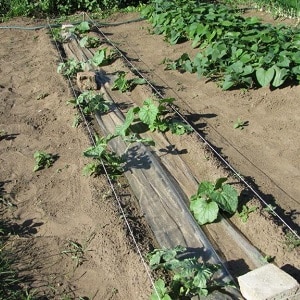 if the soil on the site is dense and heavy, add sand, slaked lime or dolomite flour to it, since Gulyabi loves loose sandy soil;
if the soil on the site is dense and heavy, add sand, slaked lime or dolomite flour to it, since Gulyabi loves loose sandy soil;- holes are made in the beds 5-7 cm deep at a distance of 70-80 cm from each other, the distance between the beds should be at least 1.5 m;
- Before planting, moisten the hole with settled warm water and place several seeds in each of them.
Water the plants only with warm water - between the rows, and not at the root. Before watering, the soil should be dry 5-7 cm from the surface. As soon as the fruits begin to ripen, watering is stopped to increase the sugar content of the fruit.
About other varieties of melon:
What is good about the Ethiopian melon?
Features of cultivation and possible difficulties
The bushes of this melon crop have the ability to quickly grow in all directions, which negatively affects the yield, as it does not leave the plant the strength to flower. To avoid this, pinch the bushes and get rid of excess ovaries. It is enough to leave 2-5 fruit ovaries on each bush.
While the bushes are small and have not had time to grow, the soil between the rows is regularly loosened. But as soon as the melons close in the rows, loosening is stopped.
Diseases and pests characteristic of the variety
Gulyabi requires increased attention from the gardener. Representatives of this variety often get sick and are attacked by pests. Among the diseases, the most dangerous are powdery mildew, fusarium, gray mold and root rot. The means to combat fungal and bacterial infections are a competent watering regime and, if this does not help, fungicides.
Melon aphids often damage the melon crop. It lives on the inside of the leaves and sucks all the juice out of the plant. If you do not treat the melon, its leaves dry out and fall off. The spider mite causes similar harm; in addition, it covers the entire above-ground part with a thin web. As a result, the melon stops growing and developing. The melon fly is rarely found in Russia. But if it appears on the site, it will quickly destroy the plants.
Folk remedies are used to fight insects like onion and garlic tinctures and in case of serious infestation - broad-spectrum insecticides.
As a rule, pest and disease control is a complex and lengthy process that negatively affects the number of fruits and yields. That's why It’s better to protect the crop in advance by periodically carrying out preventive maintenance in the form of disinfection with natural solutions.
Harvesting and application
The Gulyabi variety fully ripens by the end of August or beginning of September. As soon as the fruits begin to exude a honey aroma, the peel on the flower side will become soft, but without pressing, and the tail will dry out - it’s time to harvest.
Important. Under the right conditions, the fruits are stored until the next season, that is, until May.
In cooking, melon is used in different ways. Delicious dishes are prepared from its pulp. sweet desserts, jam And jam. Fragrant pieces of Gulyabi are added as a filling to baked goods. Melon desserts will especially delight young children. Gulyabi pulp is dried and drying. The seeds produce high-quality oil, which is similar to olive in consistency, and the cake is used as animal feed.
Reference. In Central Asia, housewives add melon to some hot dishes and soups.
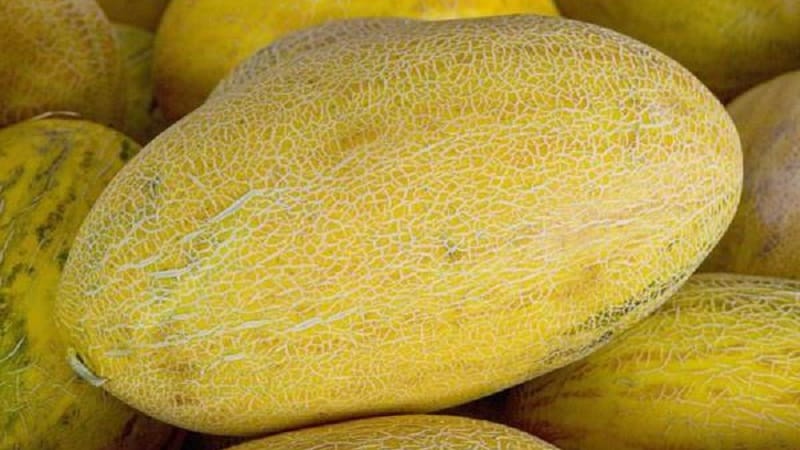
Advantages and disadvantages
Advantages:
- long period of storage of ripe fruits;
- a large amount of fiber in melon pulp;
- content of easily digestible sugars in the pulp.
Flaws:
- Gulyabi is difficult to grow in areas with a cool climate; in central Russia there is a high probability of frostbite and crop loss;
- even in greenhouse conditions, the melon may not ripen completely due to lack of light;
- People with diseases of the gastrointestinal tract and high blood sugar are not recommended to consume melon;
- The Gulyabi variety is susceptible to viral diseases and pest attacks.
Reviews from those who grew
Meet online extremely positive reviews about this melon variety:
 Ivan, Astana: “I can call Gulyabi melon my favorite variety. I fell in love with melon for its juicy, honey-sweet and aromatic pulp. Gulyabi has one important feature - after harvesting, the fruits must lie at room temperature for 4-6 days. During this time, the taste of the melon will become sweeter. In agricultural technology, the Gulyabi variety is unpretentious".
Ivan, Astana: “I can call Gulyabi melon my favorite variety. I fell in love with melon for its juicy, honey-sweet and aromatic pulp. Gulyabi has one important feature - after harvesting, the fruits must lie at room temperature for 4-6 days. During this time, the taste of the melon will become sweeter. In agricultural technology, the Gulyabi variety is unpretentious".
Svetlana, Simferopol: “I have been growing Gulyabi melon in my garden for 3 years. This melon crop is unpretentious. The fruits ripen by mid-September and look like the photos on the Internet. I liked the variety for its juicy and aromatic pulp. Gulyabi melon has good keeping quality.The harvested crop can last until the beginning of spring, thanks to which the juicy melon can be enjoyed throughout the winter.”.
How to choose fruits when purchasing
When buying melon pay attention to the aroma, the appearance of the peel and the sound that you get when you hit the melon. To choose the ripest and juiciest melon, use expert advice:
- First you need to smell the melon. A sweet and ripe fruit exudes a subtle aroma, while unripe fruits have no smell or smell of greenery. If you smell rotten, then you should refuse to buy such a fruit.
- Press down on the skin of the melon. A ripe fruit's peel should be firm and slightly springy. An overripe fruit will develop dents on the peel when pressed.
- The tail of the melon should be dry, and the opposite side of the fruit should be soft.
- You can check the ripeness of a melon by slapping it. A ripe melon should make a dull pop because the seeds, when they hit the skin, move away from the pulp and a cavity forms inside.
- The seeds of a ripe melon are large and easily separated from the pulp.
- The mesh on the melon peel should not be green. In ripe fruit it has a sandy tint.
It is better not to buy melon from stalls along the roads or near factories.. Often the conditions for storing fruits in such places are unsanitary. Purchased fruits can cause food poisoning because all melons easily absorb pollutants from the air.
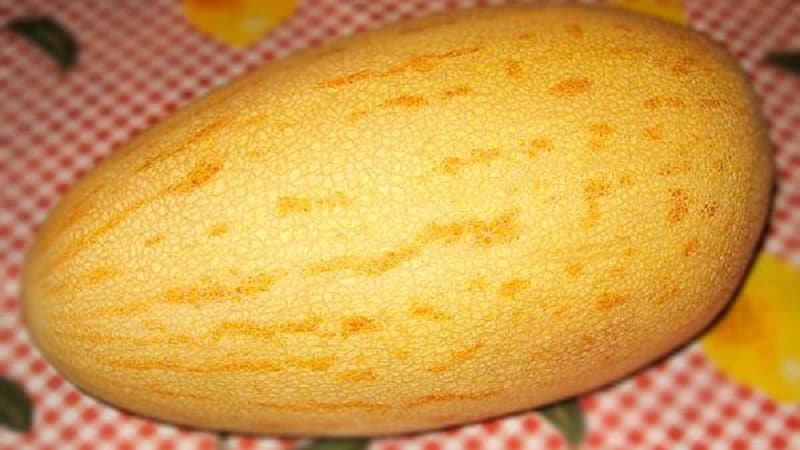
Which is tastier: Torpedo or Gulyabi?
Recently, the Gulyabi melon variety has found recognition among buyers and gardeners. Externally the fruits are similar to Torpedo - competitor variety. Often the buyer is faced with a choice of which melon to buy. Let's look at the differences.
Torpedo has a vanilla aroma, and Gulyabi has a honey aroma. Torpedo is considered slightly less tasty than Gulyabi, but some buyers choose the former because they consider it juicier. This is actually a controversial issue. To make the right choice, it is worth trying both varieties.
Conclusion
Gulyabi melon is a fragrant fruit that grows well only in regions with warm climates. To get a generous and tasty harvest, you will need careful care of the crop and hard work. It is necessary to water Gulyabi in a timely manner and form bushes. Only by following agricultural techniques will you grow a truly tasty and aromatic melon.